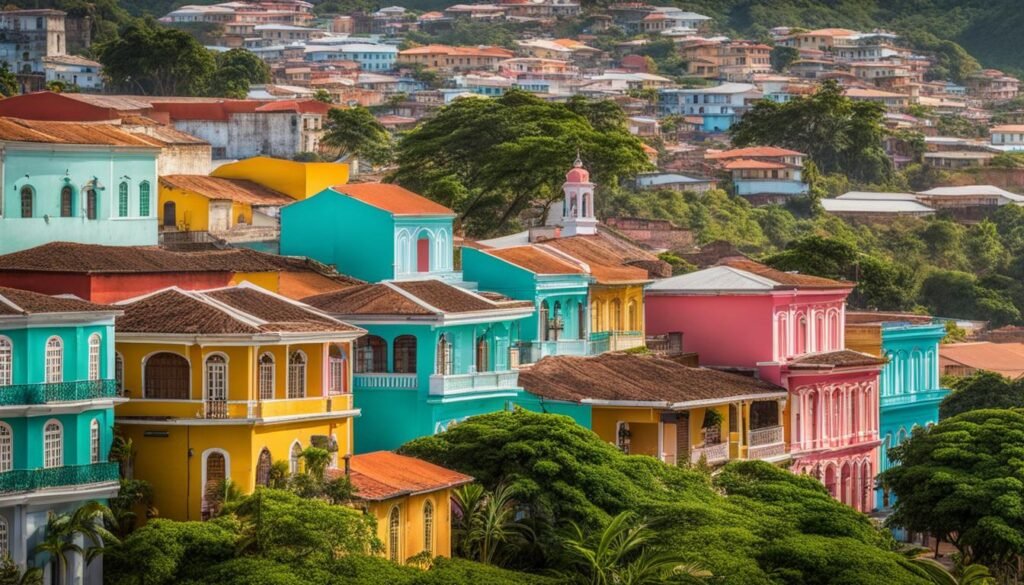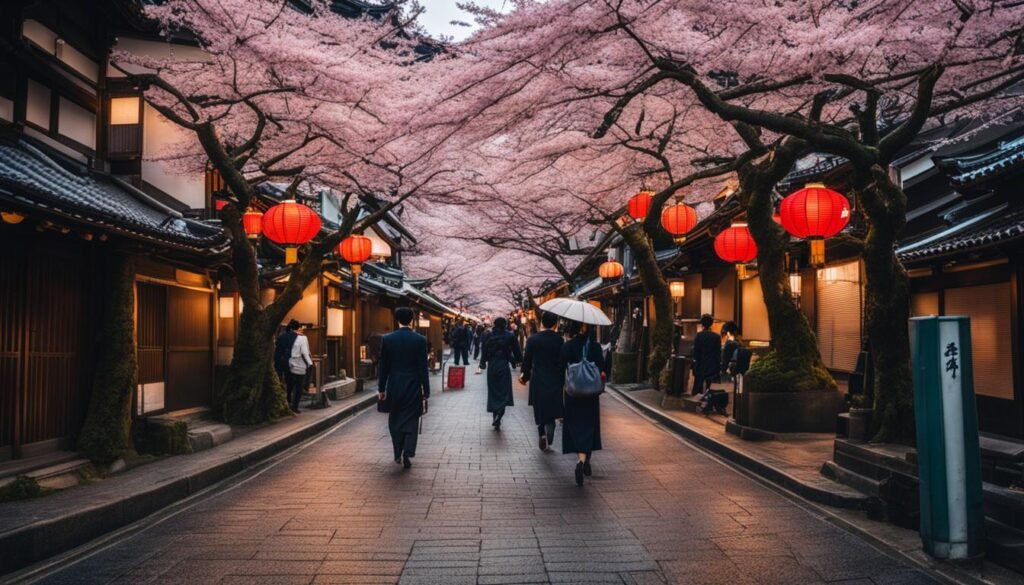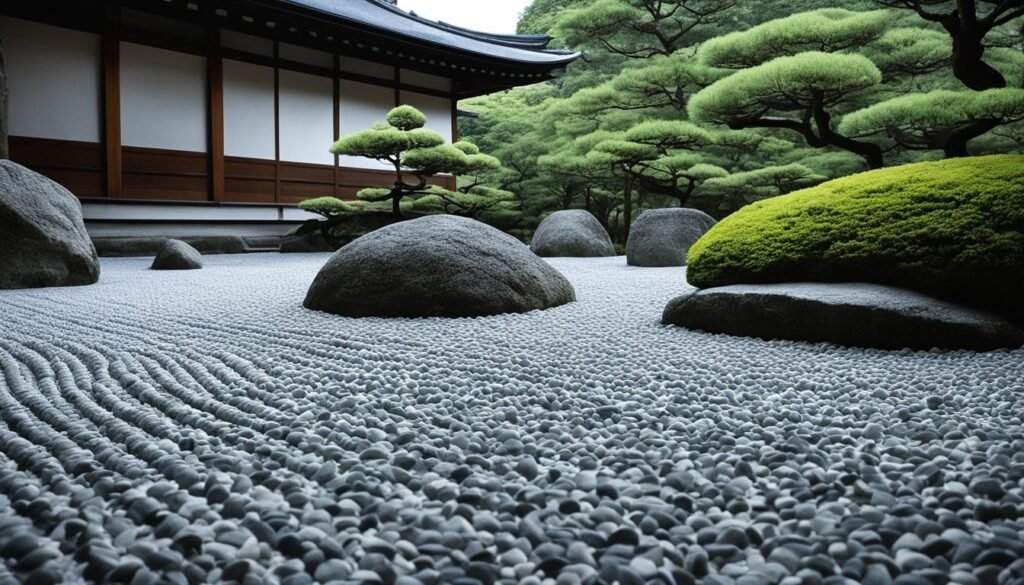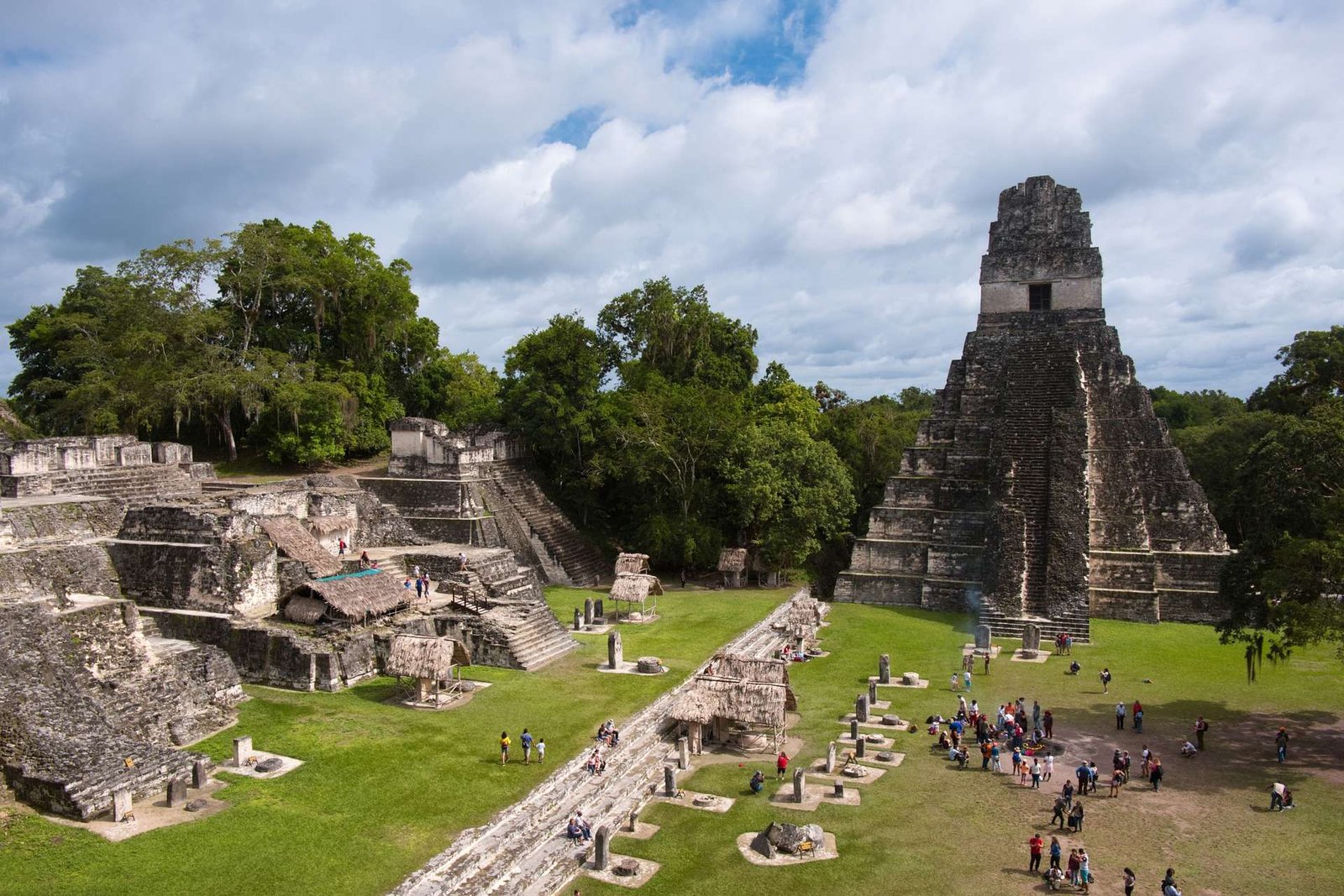Are you ready for an unforgettable journey that combines adventure and cultural exploration? Look no further! In this article, we will take you on a virtual tour of the top adventure travel destinations that offer unique cultural immersion experiences. From off-the-beaten-path destinations to renowned cultural hotspots, these destinations are perfect for those seeking to dive deep into new cultures and create lasting memories.
Key Takeaways
- Adventure travel destinations provide opportunities for cultural immersion experiences.
- Cultural tourism allows you to learn about different cultures and explore their traditions.
- International travel opens doors to unique travel experiences and new perspectives.
- Immersive travel experiences can be found both in well-known destinations and off-the-beaten-path locations.
- Exploring diverse cultures offers a deeper understanding of the world and its people.
Why Choose Cultural Travel for Immersion Experiences?
Cultural travel offers a unique opportunity to embark on meaningful travel experiences that go beyond mere sightseeing. It allows travelers to immerse themselves in different ways of life and truly connect with the local communities they visit. By choosing cultural travel, you can engage in sustainable travel practices and contribute to the preservation of diverse cultures and traditions.
One of the key benefits of cultural travel is the chance to have slower travel experiences. Rather than rushing from one tourist attraction to another, cultural travel encourages you to take your time and truly immerse yourself in the destination. Whether you’re exploring the hidden streets of a bustling city or wandering through serene countryside, slower travel allows for a deeper connection with the culture and environment.
Meaningful Connections through Cultural Exchange
Cultural exchange is at the heart of cultural travel. It offers the opportunity to broaden perspectives, challenge stereotypes, and foster empathy. By engaging in meaningful interactions with locals, you can gain a deeper understanding of their way of life and build lasting connections.
Sustainable travel is another key aspect of cultural travel. By supporting local communities, businesses, and artisans, you contribute to their economic development and help preserve their cultural heritage. Cultural travel encourages responsible tourism practices that minimize negative impacts on the environment and empower local communities.
“Cultural travel is not just about visiting a place; it’s about engaging with its people, traditions, and stories. It’s about being open to new experiences and embracing the rich diversity of our world.” – Travel enthusiast
When you choose cultural travel, you embark on a journey of self-discovery and personal growth. You gain new insights, challenge your assumptions, and develop a greater appreciation for the world’s cultural mosaic. Through cultural travel, you become a global citizen, promoting understanding and peace.
| Benefits of Cultural Travel | Examples |
|---|---|
| Deeper understanding of different cultures | Participating in traditional ceremonies in Bali |
| Meaningful interactions with locals | Learning about the tea ceremony in Kyoto |
| Sustainable travel practices | Staying in eco-friendly accommodations |
| Preservation of cultural heritage | Exploring ancient temples in Marrakech |
| Growth and personal development | Challenging your comfort zone and trying new foods |

The Pros and Cons of Cultural Travel
Cultural tourism offers a plethora of benefits, ranging from the preservation of culture and heritage to stimulating social and economic development. However, it also raises important considerations regarding authenticity and the commodification of culture. Let’s explore the pros and cons of cultural travel in more detail:
Preservation of Culture and Heritage
Cultural tourism plays a vital role in preserving culture and heritage. By promoting cultural immersion experiences, it encourages the conservation of traditional practices, customs, and art forms. Travelers who engage with local communities through cultural tourism help safeguard endangered traditions, ensuring their continuity for future generations.
Heritage Protection
One significant benefit of cultural travel is the protection of physical heritage sites. Tourism revenues often fund conservation efforts, enabling the maintenance and restoration of historical landmarks, ancient ruins, and architectural gems. This preservation contributes to the overall cultural identity of a destination and fosters a sense of pride among local communities.
Authenticity Challenges
One crucial consideration in cultural tourism is the question of authenticity. As destinations become popular, there is a risk of cultural experiences becoming diluted or staged for tourists. It is crucial to strike a balance between catering to visitor expectations and maintaining genuine cultural expression. By promoting respectful and responsible travel practices, we can ensure a more authentic and immersive experience for everyone.
Social and Economic Development
Cultural tourism can have positive social and economic impacts on local communities. It generates employment opportunities, stimulates local businesses, and promotes the understanding and appreciation of diverse cultures. By supporting the local economy and fostering cultural exchange, travelers can contribute to the sustainable development of the destinations they visit.
“Cultural tourism is a powerful tool for preserving our heritage, promoting understanding, and fostering economic growth. However, it requires a delicate balance between protecting authenticity and promoting responsible travel.” – Maria M., Cultural Travel Enthusiast
While cultural tourism offers numerous benefits, it is essential to address the potential downsides and approach travel with sensitivity and mindfulness. With careful consideration, we can enjoy the enriching experiences cultural travel provides while minimizing any negative impacts.

Medellin, the capital city of Antioquia, serves as a cultural hub and has undergone a remarkable transformation in recent years. Travelers have the opportunity to explore a variety of cultural experiences that showcase the unique heritage of the Paisas.
Immerse in the Local Cuisine
One of the best ways to immerse yourself in the Paisa culture is through its delectable cuisine. From traditional dishes like bandeja paisa, a hearty platter consisting of beans, rice, meat, and avocado, to the savory arepas and mouthwatering lechona, the local food scene offers a true taste of Colombian culture.
Visit Picturesque Pueblos
Take a journey to the picturesque pueblos or small towns nestled in the Antioquia Department. These charming settlements offer a glimpse into the region’s history and allow travelers to witness the everyday life of the local communities. Explore the cobblestone streets, admire the colorful colonial architecture, and savor the tranquility of these enchanting destinations.
Discover the Vibrant Street Art Scene
“The streets of Medellin are an open-air gallery, showcasing the vibrant creativity of local artists.”
Medellin’s street art scene is renowned worldwide, with its colorful murals adorning buildings and walls throughout the city. Take a walking tour to discover these captivating works of art and learn about their cultural and social significance. The street art reflects the resilience and transformation of Medellin, making it a truly immersive cultural experience.
Immerse yourself in the cultural vibrancy of Antioquia, Colombia’s dynamic region. From indulging in the local cuisine to exploring picturesque pueblos and discovering the vibrant street art scene, this destination offers a wealth of cultural experiences that are sure to leave a lasting impression.
Cuba – Explore the Vibrant Streets of Havana
Cuba is a vibrant destination for cultural immersion. The country boasts a rich history, influenced by a captivating blend of European, African, and Chinese cultures. When visiting Cuba, travelers have the opportunity to explore the vibrant streets of Havana, soak in the lively atmosphere, and dive deep into the country’s unique cultural heritage.
“Cuba is a place where time seems to stand still, and every corner of Havana tells a story of its own,” says Maria Gonzalez, a seasoned traveler who fell in love with the country’s charm.
Havana, the capital city of Cuba, is a fascinating melting pot of architectural wonders, music, art, and delicious cuisine. As you stroll through the city’s streets, you’ll be captivated by the sight of classic cars cruising by, a testament to the country’s enduring love affair with vintage automobiles.

Table: Top Cultural Experiences in Cuba
| Experience | Description |
|---|---|
| Visit the Che Guevara Mausoleum | Pay homage to the iconic revolutionary leader at his final resting place. |
| Explore the Viñales Valley | Marvel at the picturesque landscapes, tobacco fields, and limestone formations in this rural region. |
| Attend a Cuban cigar rolling demonstration | Learn about the art of cigar making and witness skilled artisans handcrafting these world-renowned cigars. |
With its colorful streets, vibrant music, classic cars, and warm-hearted people, Cuba offers a cultural immersion experience like no other. Whether you choose to explore the historic treasures of Havana or venture further to uncover Cuba’s hidden gems, a journey through this captivating island nation promises unforgettable moments and a newfound appreciation for its rich cultural heritage.
Tokyo, Japan – A Mix of Tradition and Modernity
Tokyo, the capital of Japan, is a city that beautifully blends tradition and modernity. Visitors can explore ancient temples and shrines, experience traditional tea ceremonies, and indulge in delicious sushi. Tokyo is a city of contrasts, where ancient traditions coexist with futuristic technology and bustling city life. It offers a unique cultural immersion experience that combines tradition and innovation.

Ancient Temples and Shrines
Tokyo is home to numerous temples and shrines that are representative of Japan’s rich cultural heritage. Visitors can marvel at the stunning architecture and intricate details of these sacred sites. One notable temple is the Senso-ji Temple in Asakusa, which dates back to the 7th century and is Tokyo’s oldest Buddhist temple. The Meiji Shrine, located in the heart of the city, offers a serene escape from the bustling urban environment. These temples provide a glimpse into Japan’s spiritual traditions and offer a sense of tranquility amidst the fast-paced city.
Traditional Tea Ceremonies
For a truly immersive cultural experience, visitors can participate in traditional tea ceremonies, known as “chado” or “sado.” These ceremonies embody the principles of harmony, respect, purity, and tranquility. Participants can learn about the art of tea preparation, the proper etiquette, and the significance of each ritual. Tea houses and gardens throughout Tokyo offer the opportunity to partake in this ancient tradition and gain a deeper understanding of Japanese customs and cultural values.
Indulge in Delicious Sushi
No visit to Tokyo would be complete without indulging in the iconic dish of sushi. The city boasts countless sushi restaurants, ranging from humble sushiya (traditional sushi shops) to high-end establishments. Visitors can savor the freshest and most exquisite sushi made with precision and skill by master chefs. From traditional nigiri sushi to creative sushi rolls, Tokyo offers a gastronomic adventure that showcases the country’s culinary excellence.
Contrasts of Tradition and Modernity
Tokyo’s unique charm lies in its ability to seamlessly blend ancient traditions with modern innovation. As visitors wander through the city, they can witness the juxtaposition of historic temples and skyscrapers, traditional markets and high-end shopping districts, and traditional arts and cutting-edge technology. Tokyo’s vibrant street culture, fashion trends, and anime and manga scenes further emphasize its modernity. This fusion of tradition and modernity creates a dynamic atmosphere that is both captivating and exhilarating.
The Cultural Tapestry of Tokyo
In Tokyo, cultural traditions are not just preserved but celebrated and integrated into everyday life. The city hosts various festivals throughout the year, showcasing traditional arts, music, dance, and costumes. From the iconic cherry blossom festivals in spring to lively summer matsuri (festivals) and the vibrant autumn foliage, Tokyo’s calendar is filled with opportunities to immerse oneself in the rich tapestry of Japanese culture.
Tokyo’s Cultural Icons
| Temples and Shrines | Traditional Tea Ceremonies | Sushi |
|---|---|---|
| Senso-ji Temple, Asakusa | Participate in a traditional tea ceremony at a tea house | Indulge in fresh and exquisite sushi made by master chefs |
| Meiji Shrine, Shibuya | Learn about the art of tea preparation and proper etiquette | Experience traditional sushiya or high-end sushi restaurants |
| Hie Shrine, Akasaka | Discover the significance of each ritual in a tea ceremony | Taste a variety of sushi, from traditional nigiri to creative rolls |
Bali, Indonesia – Dive into the Balinese Culture
Bali, the enchanting Indonesian island, is a captivating destination that welcomes travelers with its rich Balinese culture and breathtaking natural beauty. From traditional ceremonies to stunning rice terraces, Bali offers a diverse range of experiences that allow visitors to immerse themselves in the vibrant Balinese culture.
One of the highlights of a visit to Bali is witnessing the traditional ceremonies that take place throughout the island. These ceremonial rituals are an integral part of Balinese culture and offer a glimpse into the profound spirituality that permeates every aspect of Balinese life. Whether it’s a temple ceremony, a colorful procession, or a traditional dance performance, these events showcase the beauty, grace, and devotion of the Balinese people.
Another must-see attraction in Bali is the picturesque rice terraces that dot the landscape. These terraces are not only visually stunning but also represent the ancient and sustainable agricultural practices of the Balinese people. Visitors can explore the rice terraces on foot or by bike, immersing themselves in the lush greenery and quiet beauty of the countryside.
Bali is also a paradise for diving enthusiasts, offering some of the world’s most incredible underwater experiences. With its crystal-clear waters, vibrant coral reefs, and diverse marine life, Bali’s waters are teeming with opportunities for exploration. From encountering majestic manta rays to discovering colorful tropical fish, diving in Bali is an adventure that combines the wonders of the ocean with the rich Balinese culture.
Additionally, Bali is known for its thriving arts and crafts scene. Visitors can wander through the bustling markets and artisan villages, where skilled craftsmen create exquisite wood carvings, intricate silver jewelry, and vibrant textiles. The artistic traditions of Bali are deeply rooted in Balinese culture and provide a unique insight into the creativity and craftsmanship that defines the island.
Highlights of Balinese Culture
| Traditional Ceremonies | Rice Terraces | Diving | Arts and Crafts |
|---|---|---|---|
| Witness the beauty and spirituality of Balinese rituals | Explore the stunning landscapes of the ancient rice terraces | Discover the diverse marine life while diving in pristine waters | Experience the creativity and craftsmanship of Balinese artisans |
Whether you’re seeking a spiritual retreat, a cultural adventure, or an adrenaline-filled dive, Bali has it all. It is a destination that offers a perfect blend of spirituality, natural beauty, and adventure, making it an ideal choice for those looking to dive into the Balinese culture.
Marrakech, Morocco – Get Lost in the Medina
Marrakech is a city that captivates the senses and offers a truly immersive cultural experience. Visitors can get lost in the labyrinthine streets of the Medina, shop for spices and traditional crafts in the bustling souks, and indulge in flavorful Moroccan cuisine. The city’s iconic landmarks, such as the Koutoubia Mosque and the Bahia Palace, showcase the rich cultural heritage of Morocco. Marrakech is a vibrant destination that offers a unique blend of tradition and modernity.
| Experience | Description |
|---|---|
| Explore the Medina | The Medina of Marrakech is a UNESCO World Heritage Site, filled with winding alleys, bustling squares, and architectural wonders. Lose yourself in the vibrant atmosphere and soak up the sights, sounds, and scents of this historic district. |
| Visit the Koutoubia Mosque | The Koutoubia Mosque is the largest mosque in Marrakech and an iconic symbol of the city. Admire its stunning architecture and listen to the call to prayer that echoes through the streets. |
| Experience Moroccan Cuisine | Tantalize your taste buds with the flavors of Moroccan cuisine. From aromatic tagines to fragrant couscous, the local dishes are a true delight. Don’t forget to try the refreshing mint tea! |
| Discover Traditional Architecture | Marvel at the intricate details and vibrant colors of the traditional Moroccan architecture found in the historical sites and palaces of Marrakech. The Bahia Palace, with its stunning gardens and ornate interiors, is a must-visit. |
Quote:
“Marrakech is a city like no other, where the blend of sights, sounds, and flavors creates an unforgettable cultural immersion experience.” – Travel enthusiast
Immerse yourself in the vibrant culture of Marrakech, where the old world charm coexists with modern influences. Whether you’re wandering through the bustling Medina, admiring the majestic mosques, savoring the diverse flavors of Moroccan cuisine, or marveling at the traditional architecture, Marrakech offers a sensory journey that will leave a lasting impression. Prepare to be enchanted by the cultural richness and warm hospitality of this remarkable city.

Kyoto, Japan – Discover the Zen Gardens and Temples
Kyoto is a city that is deeply rooted in Japanese traditions and offers a serene cultural immersion experience. Visitors can explore the Zen gardens, participate in traditional tea ceremonies, and spot Geisha in the Gion district. The city is home to countless temples and shrines, each with its own unique history and architectural beauty. Kyoto is a cultural treasure trove that allows visitors to connect with Japan’s rich cultural heritage.
Immerse yourself in the tranquility of Kyoto’s Zen gardens, where meticulously designed landscapes create a sense of harmony and peace. Take a leisurely stroll along the carefully raked gravel paths and meditate in the presence of nature’s beauty. These Zen gardens are not only visually captivating but also provide a contemplative space for visitors to find inner serenity.
No visit to Kyoto is complete without experiencing a traditional tea ceremony. Engage in this ancient ritual as you savor the taste of matcha and appreciate the art of tea preparation. The ceremony is a moment of calm and mindfulness, allowing you to fully appreciate the importance of tradition and the beauty in simplicity.
The Gion district: Where Geisha Culture Thrives
Step into the historic streets of the Gion district and witness the enchanting world of Geisha. Here, Geisha, also known as Geiko and Maiko, carry on the traditions of music, dance, and hospitality. Spotting a Geisha in their exquisite kimono and elaborate hairstyle is like stepping back in time to a bygone era.
Explore the cobblestone streets lined with traditional ryokans, teahouses, and shops. The Gion district is a living testament to Kyoto’s cultural heritage and offers a glimpse into the refined world of Geisha. Take the opportunity to watch traditional performances, such as the Japanese dance called Nihon Buyo, and witness the grace and elegance of Geisha firsthand.
| Must-Visit Temples and Shrines in Kyoto | Highlights |
|---|---|
| Kinkaku-ji (Golden Pavilion) | A stunning temple covered in gold leaf, reflecting its beauty in a tranquil pond. |
| Kiyomizu-dera | A UNESCO World Heritage site with a wooden balcony that offers panoramic views of Kyoto. |
| Fushimi Inari Taisha | A shrine famous for its thousands of vermilion torii gates that create a mesmerizing path. |
| Ryoan-ji | Home to one of the most famous Zen gardens in Japan, known for its rock formations and carefully placed moss. |
Explore the rich architectural heritage of Kyoto by visiting its temples and shrines. Marvel at the intricate craftsmanship and admire the spiritual significance of these sacred sites. Each temple and shrine has its own story to tell, offering a glimpse into Japan’s past and the reverence for nature and spirituality that defines the culture.

Whether you’re walking through Zen gardens, taking part in a traditional tea ceremony, or encountering Geisha in the Gion district, Kyoto promises a cultural immersion experience like no other. Take the time to appreciate the centuries-old traditions and the deep-rooted cultural heritage that make Kyoto a city of timeless beauty and spiritual serenity.
Conclusion
Adventure travel destinations that offer cultural immersion experiences provide an incredible opportunity for international travelers to explore different ways of life, traditions, and cuisines. These off-the-beaten-path destinations will take you on a journey of a lifetime, allowing you to have unique travel experiences and gain a deeper understanding of diverse cultures around the world.
Immerse yourself in the vibrant streets of Havana, Cuba and witness the lively atmosphere while exploring the classic cars and experiencing the local Mambo dance. Dive into the rich Balinese culture in Bali, Indonesia as you witness traditional ceremonies, explore stunning rice terraces, and engage with the vibrant arts scene. Discover the Zen gardens and temples in Kyoto, Japan, where you can participate in traditional tea ceremonies and spot Geisha in the Gion district.
International travel to these adventure destinations that offer cultural immersion experiences will not only ignite your sense of adventure but also allow you to develop new skills and forge meaningful connections with local communities. Say goodbye to the ordinary and embark on a journey that will leave a lasting impact on your perspective of the world.
FAQ
What is cultural tourism?
Cultural tourism prioritizes learning about and experiencing different cultures. It offers travelers the opportunity to see the world from a new perspective and develop new skills. Immersive cultural experiences can also have positive impacts on local communities and the environment.
Why is cultural travel important?
Cultural travel allows for deeper and more meaningful travel experiences. It prioritizes activities and experiences designed to immerse travelers in different ways of life. Cultural tourism can have positive impacts on local communities and the environment. It also offers the opportunity for cultural exchange, which is essential for broadening perspectives and building connections with people from different cultures.
What are the benefits of cultural tourism?
Cultural tourism has many benefits, including the preservation of culture and heritage. It can help keep endangered traditions alive and incentivize the protection of physical heritage sites.
Are there any downsides to cultural travel?
Yes, there are also downsides to cultural travel, such as the question of authenticity and the commodification of culture. Cultural tourism can also have social and environmental impacts on local communities. It is important to approach cultural travel with sensitivity and mindfulness.
What is there to do in Antioquia Department, Colombia?
Antioquia Department in Colombia is known for its cultural vibrancy and the Paisa culture. The department is home to the Paisas, a self-defined cultural group with their own dialect, cuisine, and music. Visitors can immerse themselves in Paisa culture by trying the local cuisine, visiting picturesque pueblos (small towns), and exploring the vibrant street art scene.
Why is Cuba a good destination for cultural immersion?
Cuba is a vibrant destination for cultural immersion. The country has a rich history and unique blend of European, African, and Chinese influences. Visitors to Cuba can explore the vibrant streets of Havana, admire the classic cars, stay in casas particulares (home stays), and learn to dance Mambo. The island nation has a distinct charm and an atmosphere that feels frozen in time.
What can I expect to discover in Tokyo, Japan?
Tokyo, the capital of Japan, is a city that beautifully blends tradition and modernity. Visitors can explore ancient temples and shrines, experience traditional tea ceremonies, and indulge in delicious sushi. Tokyo is a city of contrasts, where ancient traditions coexist with futuristic technology and bustling city life. It offers a unique cultural immersion experience that combines tradition and innovation.
What cultural experiences can I have in Bali, Indonesia?
Bali is a popular destination known for its rich Balinese culture. Visitors to Bali can witness traditional ceremonies, explore stunning rice terraces, and immerse themselves in the vibrant arts and crafts scene. Bali is also a great destination for diving enthusiasts, with its pristine waters and diverse marine life. The island offers a unique cultural immersion experience that combines spirituality, natural beauty, and adventure.
What should I do in Marrakech, Morocco?
Marrakech is a city that captivates the senses and offers a truly immersive cultural experience. Visitors can get lost in the labyrinthine streets of the Medina, shop for spices and traditional crafts in the bustling souks, and indulge in flavorful Moroccan cuisine. The city’s iconic landmarks, such as the Koutoubia Mosque and the Bahia Palace, showcase the rich cultural heritage of Morocco. Marrakech is a vibrant destination that offers a unique blend of tradition and modernity.
What makes Kyoto, Japan a great cultural destination?
Kyoto is a city that is deeply rooted in Japanese traditions and offers a serene cultural immersion experience. Visitors can explore the Zen gardens, participate in traditional tea ceremonies, and spot Geisha in the Gion district. The city is home to countless temples and shrines, each with its own unique history and architectural beauty. Kyoto is a cultural treasure trove that allows visitors to connect with Japan’s rich cultural heritage.



